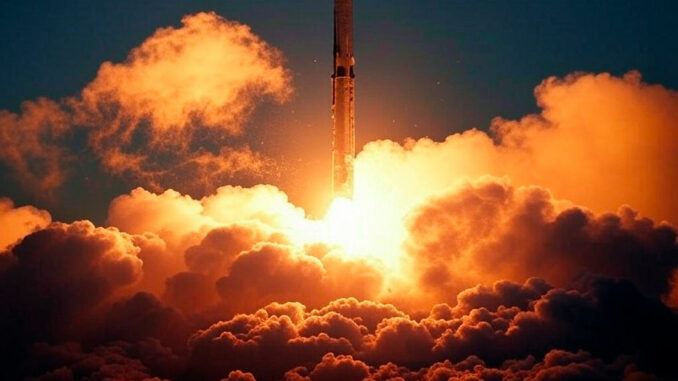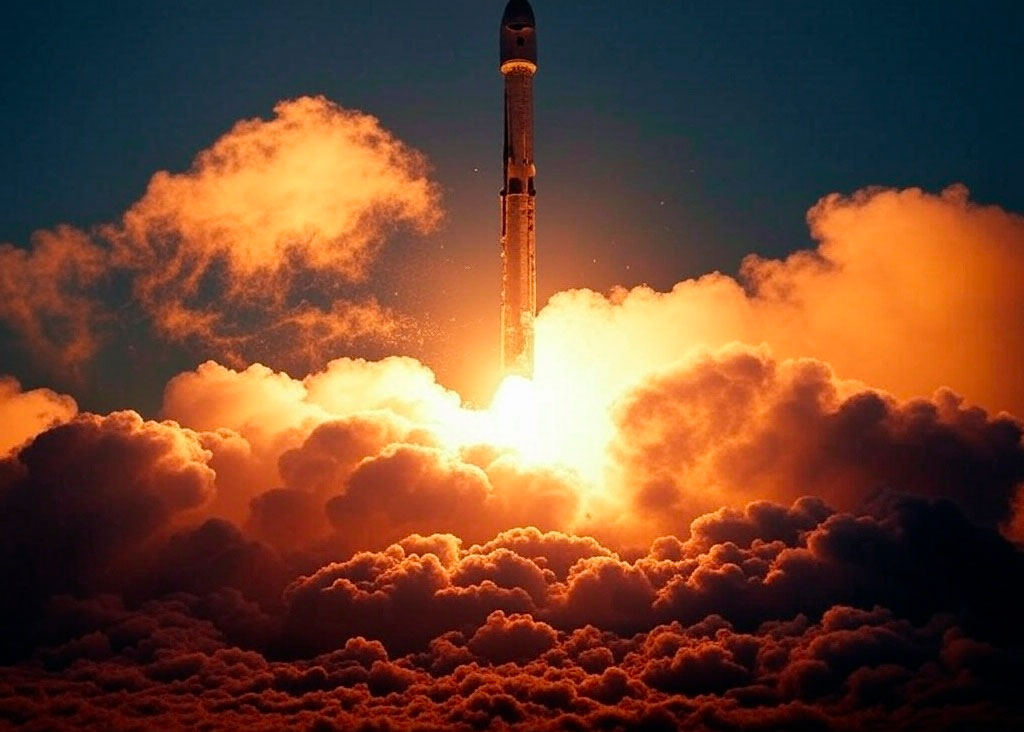
SpaceX wins the majority of NSSL-3 military launch contracts, widening the gap with Boeing and Lockheed Martin in 2027-2032.
The US Space Force has just awarded €13.7 billion in contracts for Phase 3 of the National Security Space Launch (NSSL-3) program covering the period 2027-2032. SpaceX has secured 43% of these contracts, surpassing United Launch Alliance (ULA), a consortium of Boeing and Lockheed Martin, for the first time. Blue Origin has made a significant breakthrough with 18% of the funds, while ULA has fallen to less than 40%. This redistribution weakens the former industry leaders and opens the door to new competitors such as Rocket Lab and Stoke Space. The balance of the US military space market is shifting significantly in favor of SpaceX.
The Space Force redefines the allocation of its military launches
The National Security Space Launch Phase 3 (NSSL-3) program represents a major reorganization of US military launch contracts. From 2027 to 2032, the Space Force plans 84 launches, compared to only 25 missions initially planned for Phase 2 (2022-2027). This expansion is accompanied by a doubling of the budget, from $5.5 billion to $13.7 billion.
This volume reflects an increase in the need for military satellites due to growing space threats. In 2024, more than 8,000 satellites were active in Earth orbit, around 25% of which were dedicated to defense (source: UCS Satellite Database). The rise of competitors such as China and Russia requires Washington to ensure a rapid and resilient response capability.
Each launch is estimated to cost an average of $163 million in NSSL-3, compared to $220 million in NSSL-2. This unit cost reduction demonstrates improved industrial efficiency despite the overall increase in spending.
SpaceX becomes the Space Force’s main supplier
For the first time, SpaceX has been awarded a majority share of the funds allocated in NSSL-3: €5.9 billion, or 43% of the total. By way of comparison, its share was only 40% in NSSL-2. The contract includes services beyond traditional launch services: fleet support, specific studies, single missions, and mission acceleration.
SpaceX, with its Falcon 9 and Falcon Heavy launchers, has demonstrated exceptional reliability. According to Space Launch Report, Falcon 9’s cumulative success rate exceeded 98.7% in April 2025, a figure that is difficult for its competitors to match. The intensive use of reusable launchers helps to significantly reduce costs, making SpaceX more attractive for institutional contracts.
Another key factor is that SpaceX has several operational launch sites on the east and west coasts of the United States, increasing its flexibility and ability to adapt quickly to military needs.

ULA in decline due to industrial challenges
The United Launch Alliance (ULA), owned by Boeing and Lockheed Martin, is experiencing a decline in market share, with $5.6 billion on NSSL-3, or less than 40%.
Delays in the entry into service of the new Vulcan Centaur launcher partly explain this decline. Although Vulcan made its first successful flight in January 2024, its military certification process took several additional months. This delay prompted the Space Force to reallocate several missions initially planned for ULA to SpaceX.
Logistical issues are also a hindrance. The lack of a suitable launch site on the West Coast in 2024 for Vulcan has prevented ULA from responding quickly to the requirements of certain priority space missions.
In financial terms, Boeing and Lockheed Martin are suffering. In the first quarter of 2025, Boeing posted a net loss of €425 million, mainly due to its Defense and Space divisions. Lockheed Martin, for its part, announced a 5% slowdown in its aerospace revenues over the same period.
Blue Origin’s entry into military contracts
Blue Origin, founded by Jeff Bezos, has entered the exclusive circle of NSSL suppliers for the first time, with $2.4 billion, or 18% of the funds.
Its New Glenn launch vehicle, scheduled for its maiden flight in 2025, has been selected even though it is not yet operational. This anticipation by the Space Force demonstrates a desire to diversify suppliers in order to limit excessive dependence on SpaceX and ULA.
Blue Origin will face a double challenge: successfully completing the maiden flight of New Glenn without incident and maintaining a high launch rate. The company is aiming for 12 commercial launches per year starting in 2026, but achieving this pace will require rapid industrial ramp-up.
At present, Blue Origin has yet to achieve a single successful orbital launch (New Shepard, its other launch vehicle, is limited to suborbital flights), exposing the Pentagon to significant technical risk.
Rocket Lab and Stoke Space: ambitious new entrants
Rocket Lab and Stoke Space have won Lane 1 contracts for non-certified launchers, sharing $5.6 billion with SpaceX, ULA, and Blue Origin.
California-based Rocket Lab has already completed more than 40 successful missions with its Electron rocket. Its future Neutron launch vehicle will be capable of carrying 8 tons into low Earth orbit. Stoke Space, a young and innovative company, is developing a fully reusable launch vehicle, whose first engine tests were successful in 2024.
These new entrants could accelerate the transformation of the military space market by imposing more agile, lower-cost models. In 2023, Rocket Lab carried out launches for around €6.5 million per mission, well below the traditional costs of SpaceX or ULA for small satellites.
Industrial consequences for Boeing and Lockheed Martin
ULA’s decline will have significant strategic repercussions for Boeing and Lockheed Martin. They are heavily dependent on the military space market: Lockheed Martin Space accounted for 18% of its revenue in 2023, and Boeing Defense, Space & Security accounted for 22%.
The loss of market share could lead to:
- Staff reductions in the space divisions.
- A slowdown in investment in the development of new launchers.
- A decline in competitiveness in the civil and commercial markets.
From a stock market perspective, this development is worrying. In April 2025, Boeing and Lockheed Martin posted a relative underperformance of 12% compared to the S&P 500 over a rolling 12-month period.
To secure their future, Boeing and Lockheed will have to either cut costs or reposition themselves in growth segments such as communication satellites or lunar exploration, where new NASA and Department of Defense programs are in the pipeline.
War Wings Daily is an independant magazine.